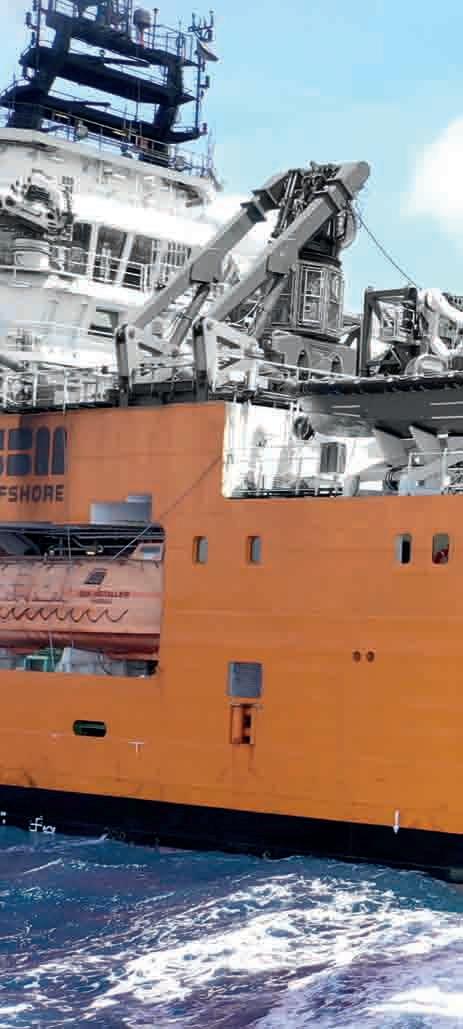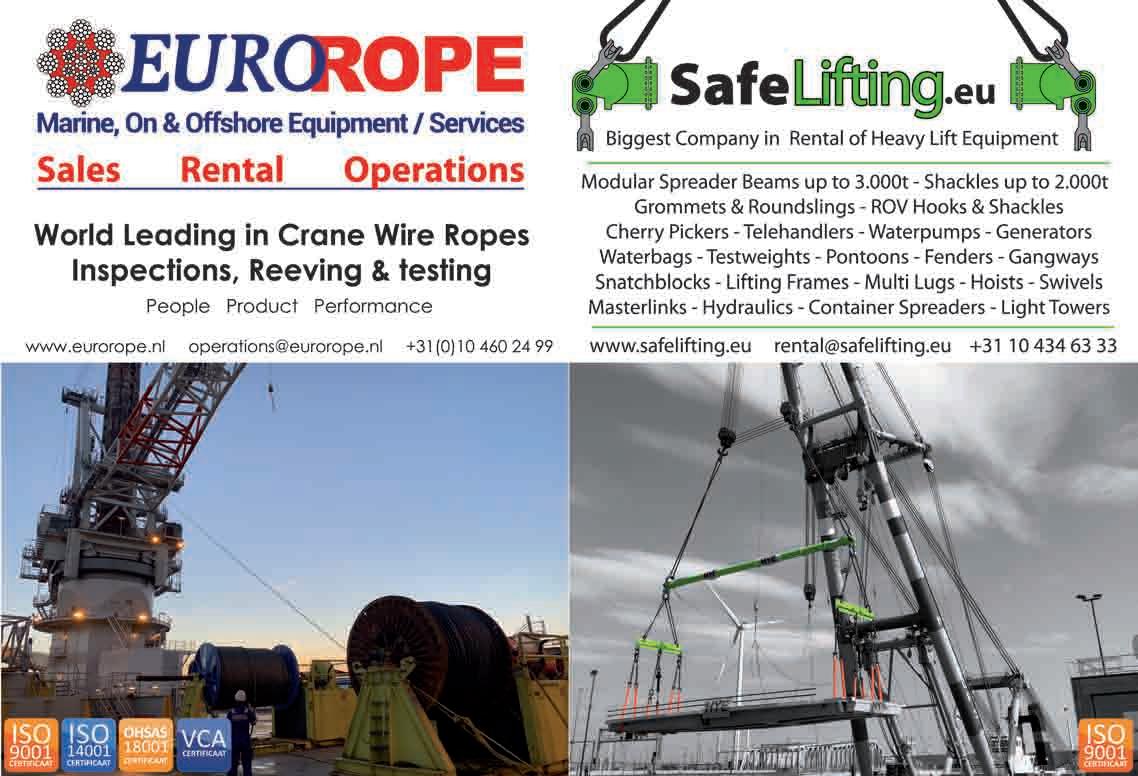
3 minute read
Onshore precision offshore
DEEPWATER FLOATING DRILL OPERATION COMPLETED
LARGE DIAMETER DRILLING (LDD) AND BARGE MASTER HAVE COMBINED THEIR EXPERTISE TO COMPLETE A WORLD FIRST: DRILLING OPERATIONS FROM A DIVING SUPPORT AND CONSTRUCTION VESSEL (DSCV) IN WATER DEPTHS IN EXCESS OF 270M.
ALL PHOTOS COURTESY OF BARGE MASTER.
LDD has successfully completed the installation of seven anchor mooring piles for a Catenary Anchor Leg Mooring (CALM) buoy. The technique the company employed could prove to have potential for industry-wide applications.
Extreme challenges The Limetree Bay Installation project was executed in the Caribbean Sea, approximately 2km off the coast of St. Croix (US Virgin Islands), for Imodco Terminals, a subsidiary of SBM Offshore. The circumstances were exceptionally challenging. Typically, reverse circulation drilling takes place off a jack-up barge (JUB) or from the pile top itself. However, substantial water depths (ranging between 80-275m), challenging seabed conditions (seabed slopes up to 17 degrees) as well as the physical attributes of the anchor pile design made this impossible. An innovative and robust solution was required.
A successful outcome Since operational and environmental constraints limited the use of conventional drilling methods, LDD decided to integrate its reverse circulation LD2500 drill rig with Barge Master’s motion compensation platform BM-T700 by mounting the LD2500 to a cantilever beam that was subsequently affixed to the BM-T700 platform. By combining Barge Master’s motion compensation technology and LDD’s drilling system, LDD achieved a successful outcome. Barge Master’s motion compensated platform allowed for a secure and balanced drilling operation from a floating vessel, in highly challenging conditions. The equipment spread was mobilised on-board diving support and construction vessel (DSCV) SBM Installer in Q1 2019 in Rotterdam. The DSCV then sailed to St. Croix. LDD successfully completed all aspects of the project, ranging from the installation of the seven anchor piles and the drilling element, utilising the BM-T700 platform for necessary motion compensation, to the design and engineering pertaining to installation, pile handling, and grouting elements.
BM-T700 platform The Barge Master BM-T700 platform can be installed on any vessel to serve as a motion compensated working base. Equipment such as cranes, excavators, and drilling configurations can be placed on the platform to eliminate the effect of vessel motions, making it possible to operate the machinery with the same precision as onshore. By compensating the vessel’s movements, the platform effectively turns the deck space into a perfectly stable working area. As a result, operations can continue even in adverse weather. The motion compensated platform provides an alternative for jack-up rigs, which can be expensive to mobilise, hard to manoeuvre, and limited by water depth and soil conditions. The platform is fully modular, making it possible to carry out the operations from a floating position, independent of soil or weather conditions. It is also highly manoeuvrable. Moreover, the platform provides a safe alternative or addition to (semisubmersible) tender barges with offshore cranes, which are limited by wave height and can cause unsafe working conditions. The BM-T700 has a payload capacity of 700mT, or can accommodate a crane with an average capacity of 160mT at 12m radius. The platform can compensate waves up to a significant wave height of 2.5m. Both the platform and its foundations consist of containerised units, which can be assembled within ten working days.
A world first: drilling operations from a diving support and construction vessel (DSCV) in water depths in excess of 270m.















